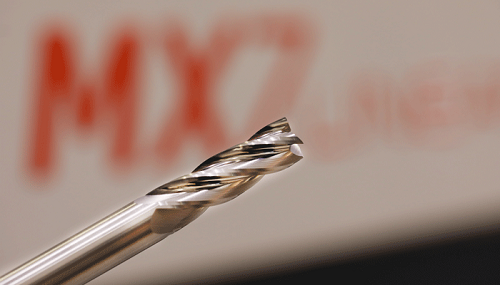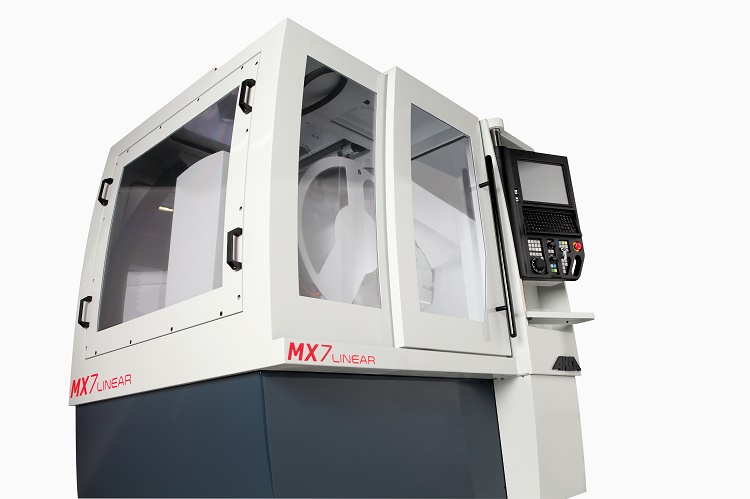As well as being pleasing to the eye, highly polished flutes and gash surfaces improve chip evacuation and significantly improve tool performance and life. The smoother surface enables swarf (or chips) to exit more freely, preventing chip packing and material build up during machining.
ANCA is well known in the industry for its rigid grinding machines and has combined this with its sister company, ANCA Motion’s, LinX linear motor technology. Tools ground on our machines have a consistently high-quality cutting edge and surface finish. Since the product was launched customers have reported dramatically better results using the duel technologies.
Simon Richardson, ANCA Product Manager explained: “When machining softer or ductile materials, chips can stick to the carbide. If the chips created are not removed faster than they are being produced – the tool may not perform effectively. However, a better surface finish on the flute prevents the swarf from sticking onto the flute face of the tool while reducing the amount of heat that is generated when machining.”
 “We realised that having a highly rigid machine with a cylindrical linear motor that boasts a smooth axis movement, would greatly improve the final surface finish on the tool. The research and development team conducted many hours of test grinding to rigorously test our assumption of what surface finish quality we thought was possible.”
“We realised that having a highly rigid machine with a cylindrical linear motor that boasts a smooth axis movement, would greatly improve the final surface finish on the tool. The research and development team conducted many hours of test grinding to rigorously test our assumption of what surface finish quality we thought was possible.”
An Alicona infinite focus XL metrology machine in ANCA’s Grinding Centre of Excellence was used to verify the results to Nano metre accuracy finding that a surface finish roughness average as low as 164.7nm (which translates to 0.16 Ra) was achieved.
Paul Bocchi, General Manager of ANCA Motion said: “An advantage of knowing ANCA’s customers so intimately is that we could immediately see how our technology would work seamlessly to improve performance.”
“The LinX cylindrical linear motors ensure there is no loss of preload or rigidity when grinding tools. As well as that, reversal errors are eliminated and higher contouring accuracy can be maintained due to a control algorithm we use which is unique to ANCA.”
Simon concluded: “Tools with highly polished surfaces means better cutting edges which will ensure extended tool life and improve the finish on the machined part. We have seen the demand for tools with a superior surface finish continue to increase and cutting tool manufacturers are producing more highly polished tools in larger quantities.”
Tips on achieving a superior tooling surface finish
- The quality of the grinding wheel is critical in achieving a high-quality surface finish. A fine-grit wheel can form small chips during grinding which could impart fine marks on the flute face and gash.
- Using a fine-grit also poses a challenge as the wheel must be fine enough to produce the required surface finish while maintaining a good toroid radius over a batch of tools.
- Ensure the wheel is properly trued and dressed so that it performs as expected.
- Ensure efficient coolant delivery and fine filtration systems are in place.
- Ensure the grinding wheels are balanced correctly using iBalance


